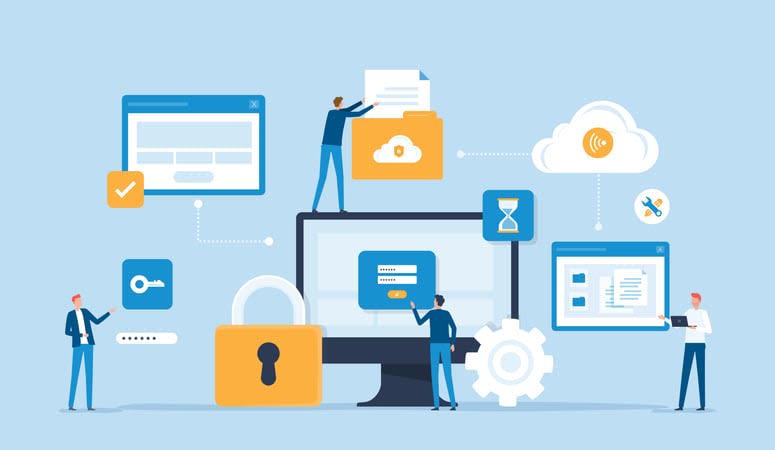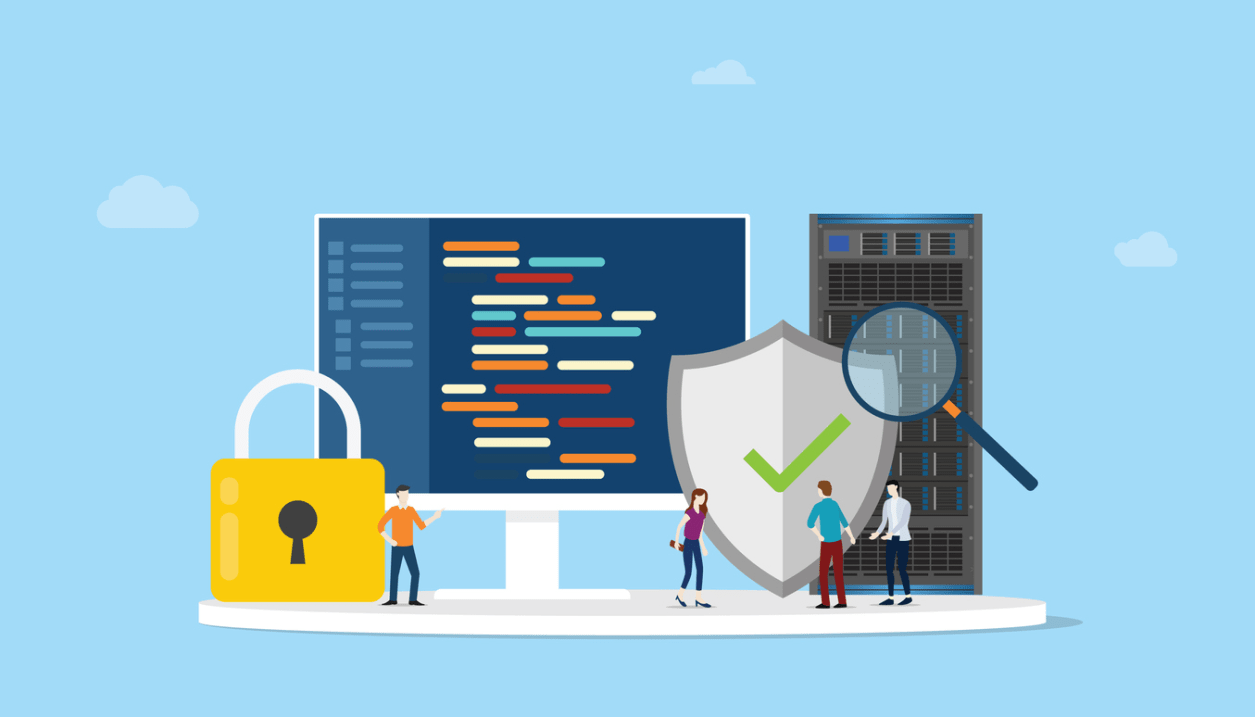In an era where data breaches and cyber-attacks make headlines daily, the importance of secure communication cannot be overstated. Businesses today rely on secure internal communication to protect sensitive data, maintain trust, and keep operations running smoothly. Whether you call it secure comms or advanced secure communication systems, the goal is the same: ensuring the confidentiality, integrity, and authenticity of every message exchanged.
In this blog post, we’ll explore what makes communication secure, the essential features of modern systems, industry-specific solutions, top providers, and the future of secure communication for organizations of all sizes.
Key takeaways
- Secure communication is essential for protecting sensitive data in today’s interconnected world.
- Essential features of secure communication technology include end-to-end encryption, multi-factor authentication and access control.
- To ensure the security of your business’ communications, integrate comprehensive solutions that provide advanced encryption algorithms, biometric authentication and secure protocols.
The importance of secure communication in today's world

From healthcare to financial services, businesses and governments alike depend on secure internal communication channels to transmit sensitive data, including contacts. The stakes are high: a single compromised email can jeopardize an entire company network, putting valuable resources and reputations at risk.
Robust secure communication systems play a critical role in our interconnected world. However, legislative, resource, technical, and volume-related challenges can complicate the adoption of reliable secure comms, making it difficult to safeguard information across multiple devices and networks. As technology continues to evolve, organizations must remain vigilant, prioritizing modern secure communication tools and strategies that keep sensitive information protected while enabling seamless collaboration.
Essential features of secure communication technology

Organizations should adopt a comprehensive strategy that includes several key features to achieve secure communication. This includes:
- End-to-end encryption
- Multi-factor authentication
- Access control
- Group messaging
We will delve deeper into these features to understand their role in protecting sensitive data.
End-to-end encryption
End-to-end encryption is a powerful method of ensuring the privacy and integrity of data during transmission. End-to-end encryption, which encrypts data on the sender’s device and decrypts it only on the recipient’s device, ensures that only the intended recipients can view the message content.
The encryption process involves the use of public and private keys, which encrypt and decrypt data, respectively. This advanced security measure offers a high degree of protection for sensitive information, ensuring that only authorized recipients can access the content of messages and safeguarding the privacy of all parties involved in the communication.
Multi-factor authentication
Multi-factor authentication (MFA) adds an extra layer of security by requiring users to present multiple forms of identification before accessing secure communication channels. MFA typically involves a combination of:
- Something the user knows (e.g., a password)
- Something the user has (e.g., a smartphone or token)
- Something the user is (e.g., a fingerprint or facial recognition)
The implementation of MFA allows organizations to drastically diminish the risk of unauthorized access to confidential data and accounts, thereby playing a crucial role in secure communication technology solutions.
Access control and group messaging
Access control and group messaging features empower organizations to effectively manage user permissions and securely collaborate with multiple team members. Solutions like MindLink’s chatting system, for example, offer highly encrypted chat rooms and strict access control, ensuring the security of users’ information.
These tools, ranging from shift-based team operations and real-time operations to inter-organizational collaboration, are customized to suit various job operations. Combining access control with group messaging allows organizations to regulate access to their messages and participation in group discussions, thus bolstering overall security and productivity.
Industry-specific secure communication solutions

While the core features of secure communication technology are applicable across industries, certain sectors like healthcare, financial services, and government have unique security requirements and compliance standards that must be addressed.
Industry-specific secure communication solutions are designed to cater to these specific needs, ensuring that sensitive data remains protected and confidential.
Healthcare
In the healthcare industry, patient privacy and compliance with regulations like the Health Insurance Portability and Accountability Act (HIPAA) are of paramount importance. HIPAA-compliant messaging solutions, such as secure messaging apps, encrypted email services, and secure patient portals, are designed to protect the privacy and security of protected health information (PHI) during transmission between healthcare providers, patients, and other authorized entities.
Utilizing HIPAA-compliant messaging solutions enables healthcare organizations to guarantee the confidentiality, integrity, and availability of PHI, all while adhering to rigorous regulatory requirements.
Financial services

The financial services sector deals with sensitive financial data and must adhere to industry-specific regulations, such as GDPR and PCI DSS. Secure communication technology in financial services often incorporates:
- End-to-end encryption
- Secure file sharing
- Secure messaging
- Access controls
These measures ensure the security of data on various devices.
Implementing these features enables financial institutions to safeguard sensitive data, comply with regulatory standards, and lessen the risk of data breaches and cyber attacks.
Government
Government secure communication solutions prioritize national security and the protection of classified information. These solutions typically employ advanced encryption and access control measures, such as end-to-end encryption and multi-factor authentication, to ensure that only authorized personnel can access the shared data.
In addition to these measures, government secure communication tools often include features like secure data storage and secure file sharing, helping to safeguard sensitive information and maintain the confidentiality of classified data.
Top secure communication software providers

A variety of secure communication software providers offer comprehensive solutions to help businesses protect their sensitive data and communicate securely. Some of the top providers include:
- Kumospace
- MindLink
- ExchangeDefender
- Mailock
- Perception Point
- Eclipso
- Rocket.Chat
- Salt Communications
- Beyond Encryption
- Quickblox
- Hourspent
These providers offer a range of features and benefits, such as:
- End-to-end encryption
- Multi-factor authentication
- Secure file sharing
- Access control
By implementing these tools and technologies, businesses can enhance their data security, maintain compliance with regulatory standards, and safeguard their valuable resources.
Integrating secure communications into your business

A successful integration of secure communication technologies into your business requires a holistic strategy, which includes:
- Using encrypted communication channels
- Securing network infrastructure
- Implementing robust authentication
- Training employees on secure communication practices
In addition, organizations should:
- Employ secure messaging and collaboration tools
- Frequently update and patch software
- Perform regular security audits to ensure the ongoing protection of sensitive data.
Training employees is particularly vital as it provides staff with the necessary knowledge and skills to effectively utilize secure communication protocols. This includes the use of strong passwords, avoidance of phishing attacks, and the utilization of secure messaging and collaboration tools on their devices.
The future of secure sommunication

With ongoing technological advancements, we anticipate a more sophisticated and robust future for secure communication. Emerging trends and technologies, such as advanced encryption algorithms, biometric authentication, and secure communication protocols, will significantly shape the way organizations protect their sensitive data and communicate securely in the coming years.
The future of secure communication will primarily focus on:
- Ensuring the confidentiality, integrity, and authenticity of data transmission
- Maintaining the security of users’ information
- Embracing new technologies and strategies to protect valuable data
- Maintaining secure communication channels
As the digital landscape evolves, businesses and governments must remain vigilant and adaptive to these changes to better serve their customers.
Summary
In conclusion, secure communication is a critical aspect of our increasingly interconnected world. By recognizing the importance of secure internal communication, implementing essential features such as end-to-end encryption, multi-factor authentication, and access control, and leveraging industry-specific secure communication systems, organizations can effectively safeguard sensitive data and maintain trusted channels.
As we look to the future, adopting reliable secure comms solutions will be essential for businesses and governments alike. Staying ahead of emerging trends and technologies ensures the ongoing security and privacy of information is crucial, where strong secure communication practices are no longer optional but mission-critical.
Frequently Asked Questions
Secure communication methods involve the use of encryption and other security measures to protect data from unauthorized access. Data is securely transmitted between two or more parties by scrambling it so that only the intended recipient can read it.
Secure communication requires a complete platform and device compatibility, support for all types of communications, secure file sharing, secure authentication, zero trust access, end-to-end encryption, and ephemeral messaging. These features are essential for secure communication, as they ensure that all data is encrypted and protected from unauthorized access. Additionally, they provide a secure environment for users to communicate without fear of their data being intercepted or compromised.
Secure communication is essential to protect information from being shared publicly, as encryption limits the possibility of anyone intercepting data. Therefore, we need secure communication to ensure our private conversations remain private.
End-to-end encryption is essential for secure communication, ensuring that only the intended recipients have access to private messages. It provides a high level of protection for sensitive data.
Businesses can protect their communication by utilizing encrypted channels, securing network infrastructure, implementing strong authentication, and educating employees on secure communication practices.





